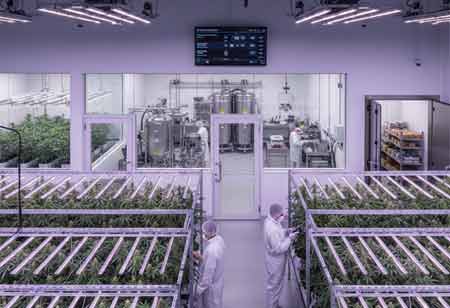Thank you for Subscribing to Cannabis Business Insights Weekly Brief
Exploring Extraction Methods for Optimal Terpene and Cannabinoid Preservation
The cannabis industry is undergoing a shift towards a deeper understanding of the plant's chemical composition.

By
Cannabis Business Insights | Tuesday, June 25, 2024
Stay ahead of the industry with exclusive feature stories on the top companies, expert insights and the latest news delivered straight to your inbox. Subscribe today.
The cannabis industry is exploring terpenes' impact on strains' aroma, flavor, and psychoactive effects, with researchers exploring innovative extraction methods to refine extraction processes.
FREMONT, CA: The cannabis industry is undergoing a shift towards a deeper understanding of the plant's chemical composition. Beyond the well-known cannabinoid, THC lies a fascinating array of terpenes and their potential influence on the overall cannabis experience. Extracting these valuable compounds effectively while preserving their delicate balance is crucial for creating high-quality cannabis products.
Cannabinoids like THC and CBD are the primary contributors to the cannabis entourage effect. This theory posits that various compounds within the plant, including terpenes, interact synergistically to produce a more holistic impact than any single component alone. Terpenes, the aromatic oils found in cannabis, contribute to each strain's distinctive smell and flavor. Their role, however, extends beyond aesthetics. Research suggests that terpenes such as limonene and pinene influence the psychoactive effects of THC, potentially enhancing focus or relaxation.
Preserving both terpenes and cannabinoids during extraction is paramount to harnessing the full potential of the cannabis plant. A well-extracted product retains the unique chemical profile of the source material, potentially leading to a more targeted and practical experience for the user.
The choice of extraction method plays a crucial role in determining the terpene and cannabinoid profile of the final product. Solvent-based extraction, such as hydrocarbon extraction, is highly efficient in extracting a wide range of cannabinoids, though it can be harsh on terpenes due to their volatile nature. Recent advancements in closed-loop systems have mitigated terpene loss, but further optimization is essential. In contrast, supercritical CO2 extraction offers a cleaner, more controlled approach, using pressurized CO2 to extract desired compounds. This method allows for fine-tuning to target specific cannabinoids and terpenes, providing greater control over the final product's profile. Like rosin pressing, solventless extraction employs heat and pressure to extract cannabinoids and terpenes without solvents, often resulting in products with a richer terpene profile. However, it may yield lower cannabinoid potency. Each method presents unique advantages and challenges, underscoring the importance of selecting the appropriate technique based on the desired attributes of the final product.
The cannabis extraction industry is continuously evolving, with researchers exploring innovative techniques such as low-pressure CO2 extraction and terpene trapping to refine the process and preserve the delicate terpene profile. Additionally, the rise of terpene reintroduction methods allows processors to reintegrate terpenes isolated during extraction back into the final product, potentially creating a more tailored consumer experience.
By prioritizing the preservation of terpenes and cannabinoids during extraction, processors can develop cannabis products that fully harness the plant's entourage effect. This approach results in a more diverse range of products with targeted effects catering to individual user needs. As research on the entourage effect advances, understanding the intricate interplay between terpenes and cannabinoids will be fundamental to crafting the next generation of high-quality cannabis products.






